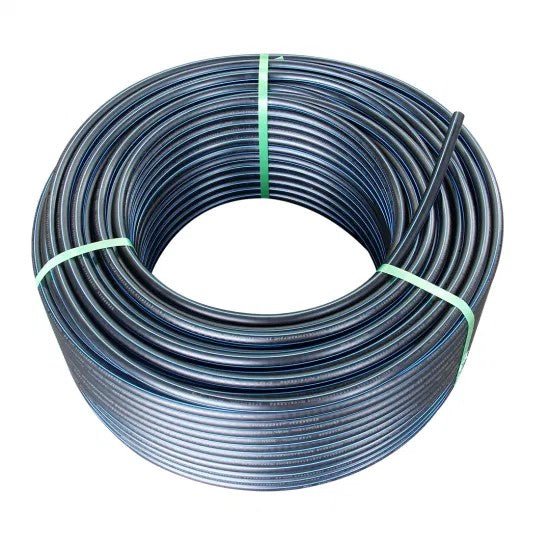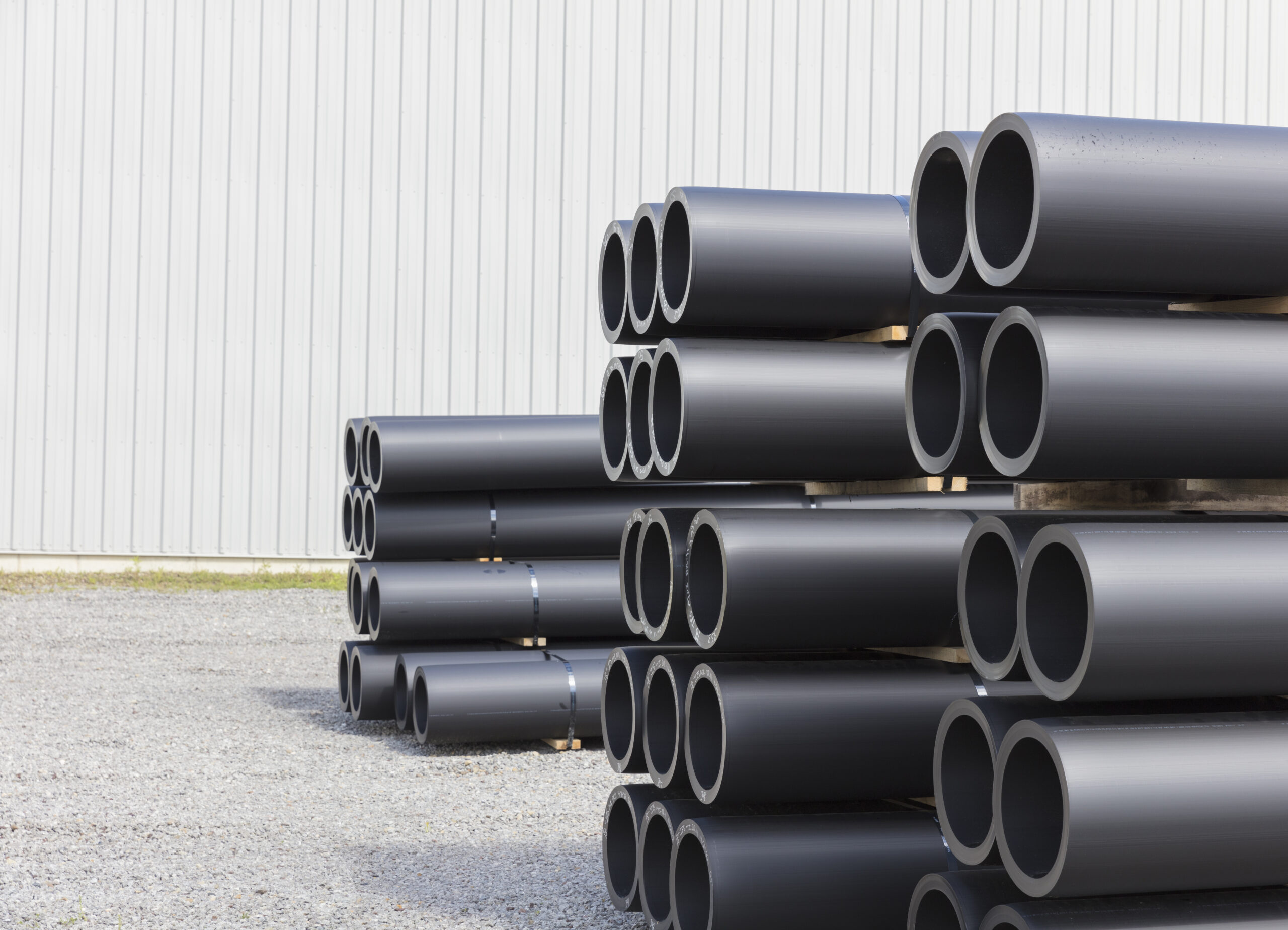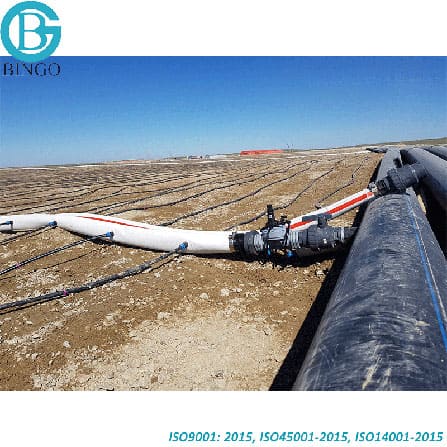How Midland TX HDPE Pipe Fittings in Stock Support Local Projects
Wiki Article
Explore the Production Refine Behind High-Quality HDPE Pipeline and Its Applications
The production procedure of top notch HDPE pipes is elaborate and methodical. It begins with the choice of raw materials that improve performance. Following this, ethylene undertakes polymerization to develop resin, which is after that shaped with extrusion. Quality assurance is extremely important, making certain that the last item fulfills stringent criteria. The trip of HDPE pipes does not end with production. Their applications across different sectors expose a more comprehensive importance worth taking a look at.Comprehending HDPE: Characteristics and Advantages

High-density polyethylene (HDPE) is a flexible polycarbonate known for its durability and resistance to various environmental elements. This material exhibits exceptional tensile toughness, making it appropriate for requiring applications. Its low-density framework adds to a light-weight product, helping with convenience of managing and setup. HDPE also showcases exceptional resistance to chemicals, which decreases degradation when subjected to rough compounds.
The product's low wetness absorption even more improves its longevity, making it ideal for use in pipelines and storage containers. Additionally, HDPE is resistant to ultraviolet (UV) radiation, ensuring that products maintain their honesty also when revealed to sunlight. Its versatility enables for the production of elaborate shapes without endangering toughness. The eco-friendly nature of HDPE, commonly originated from recycled products, contributes to its charm, advertising lasting methods in manufacturing. On the whole, these buildings and advantages make HDPE a favored choice for numerous industrial and customer applications.
Basic Material Option for HDPE Manufacturing
The choice of basic materials for HDPE manufacturing is necessary to verify the end product fulfills the wanted specifications and quality requirements. High-density polyethylene (HDPE) is mainly produced from polymerized ethylene, originated from nonrenewable fuel sources such as all-natural gas or petroleum. The high quality of these feedstocks considerably affects the mechanical and thermal properties of the final HDPE.Ingredients also play a significant duty in boosting HDPE's performance, consisting of anti-oxidants, UV stabilizers, and colorants, which improve sturdiness and resistance to environmental factors. The option procedure need to consider not just the chemical make-up of the raw materials but also their handling attributes to ensure efficient manufacturing.
In addition, the sourcing of basic materials must prioritize sustainability and compliance with ecological policies, as responsible practices are vital in today's market. Eventually, mindful resources selection lays the foundation for generating high-quality HDPE pipelines suitable for diverse applications.
The Extrusion Refine: Shaping HDPE Pipeline
The extrusion process plays a crucial role fit HDPE pipes, beginning with meticulous product prep work methods that guarantee optimal flow and consistency. Equally important is the style of the die, which directly influences the last measurements and surface area quality of the pipeline. With each other, these aspects add substantially to the effectiveness and top quality of HDPE pipe manufacturing.Product Preparation Techniques
Effective production of HDPE pipes starts with meticulous material prep work strategies, particularly the extrusion process. During this phase, high-density polyethylene resin is very first dried out to eliminate wetness, guaranteeing optimal circulation qualities. The resin is then fed right into the extruder, where it undergoes home heating and melting, transforming right into a thick state. This home heating process is very carefully regulated to preserve the product's stability and performance. The liquified HDPE is forced with a die, forming it right into a continual pipeline form. Proper temperature monitoring throughout extrusion is crucial, as it directly impacts the product's buildings and the end product top quality. As soon as shaped, the HDPE pipeline is cooled and reduced to specified sizes, all set for subsequent processing and applications.Die Design Relevance
Precision in die style plays an essential role in the extrusion process of HDPE pipelines. The die serves as the final shaping device, directly affecting the pipeline's measurements, wall density, and surface finish. A well-designed die guarantees consistent material flow, reducing issues such as abnormalities and weak spots. The geometry of the die should be optimized to suit the specific properties of HDPE, including its thickness and thermal habits during extrusion. Additionally, the cooling price of the product as it travels through the die can substantially impact the pipeline's structural honesty. Consequently, purchasing advanced die innovation is crucial for producers aiming to create top notch HDPE pipelines that satisfy industry standards and customer expectations.Top Quality Control Procedures in HDPE Production
Although numerous factors affect the quality of HDPE pipe production, efficient high quality control procedures are essential to assure uniformity and reliability in the end product. Key quality control practices include extensive product assessment, verifying that the raw polyethylene fulfills well-known criteria for purity and density. Throughout the extrusion process, criteria such as temperature, stress, and cooling time are closely monitored to keep dimensional precision and link structural integrityOn top of that, post-production testing is necessary; producers often conduct hydrostatic examinations to analyze the pipe's stamina and resistance to pressure. Visual inspections for surface area problems better improve quality control. Accreditation from relevant requirements companies, like ASTM or ISO, supplies an additional layer of reputation. By executing these detailed quality assurance measures, makers can decrease problems, improve performance, and make certain that the HDPE pipes meet the certain demands of numerous applications, ultimately leading to consumer fulfillment and count on the product.
Applications of HDPE Pipe Throughout Industries
HDPE pipelines are utilized across numerous markets as a result of their resilience and flexibility. In water distribution systems, they assure reliable delivery, while in wastewater monitoring, they offer trustworthy options for waste transportation. In addition, agricultural watering networks take Get the facts advantage of HDPE's resistance to rust and adaptability, making it a suitable choice for contemporary farming techniques.
Water Distribution Systems
A substantial variety of sectors count on high-density polyethylene (HDPE) pipes for reliable water circulation systems. Recognized for their sturdiness and resistance to deterioration, HDPE pipelines are widely made use of in community water system networks, farming watering, and industrial applications. Their light-weight nature assists in very easy handling and installment, lowering labor costs and time. In addition, HDPE pipes can fit different pressure degrees, making them suitable for both low and high-pressure systems. Pipe Manufacturing Midland TX. The flexibility of the material permits smooth combination right into existing facilities, reducing the demand for substantial excavation. HDPE's resistance to chemical seeping assurances that the water delivered remains secure and clean, making it an excellent selection for keeping the quality of potable water throughout different industries.Wastewater Monitoring Solutions
Efficient water distribution systems also pave the method for cutting-edge wastewater monitoring remedies, where high-density polyethylene (HDPE) pipelines play a significant duty. Popular for their durability and resistance to corrosion, HDPE pipelines are optimal for moving wastewater in various setups. Their versatility permits very easy installation in intricate settings, minimizing the demand for extensive excavation. In addition, HDPE's smooth interior surface area minimizes friction, boosting circulation rates and efficiency. These pipelines are additionally immune to chemical leaching, ensuring that pollutants do not compromise the surrounding setting. Industries, districts, and treatment centers increasingly depend on HDPE pipelines for their integrity and longevity, making them a favored choice for modern-day wastewater administration systems. This flexibility underscores the vital importance of HDPE pipes across numerous applications.Agricultural Irrigation Networks
Agricultural watering networks profit substantially from using high-density polyethylene (HDPE) pipes, which give effective and reliable water delivery to plants. HDPE pipes are light-weight, making them easy to carry and install, while their versatility allows for numerous arrangements in diverse terrains. These pipelines show exceptional resistance to corrosion, chemicals, and UV radiation, ensuring resilience in severe agricultural environments. Furthermore, their smooth indoor surface area decreases rubbing loss, optimizing water flow and decreasing energy prices related to pumping. The longevity of HDPE pipes, commonly surpassing half a century, adds to decrease upkeep and substitute expenses. Farmers significantly depend on HDPE pipelines to enhance watering efficiency and promote lasting agricultural practices, ultimately leading to improved crop returns and source preservation.
Future Trends in HDPE Pipeline Technology
As the demand for sustainable and reliable framework grows, innovations in HDPE pipe innovation are positioned to transform various markets. Emerging trends pecks plumbing consist of the combination of smart technologies, such as sensors and IoT abilities, which help with real-time tracking of pipe problems, decreasing maintenance costs and avoiding leaks. Furthermore, the advancement of sophisticated production techniques, such as 3D printing, is allowing the manufacturing of facility, personalized pipeline designs that deal with particular job needs.Moreover, the focus on recycling and round economic climate techniques is driving the advancement of HDPE pipes made from recycled products, boosting sustainability. Boosted jointing approaches, such as electro-fusion and mechanical installations, are also enhancing installment efficiency and reliability. The growing emphasis on environmental guidelines is pressing makers to adopt greener production procedures, making sure that HDPE pipelines not just meet industry requirements yet additionally promote a more sustainable future for infrastructure advancement.
Regularly Asked Questions
Exactly How Does HDPE Compare to Various Other Plastic Materials?
HDPE outperforms several various other plastic materials pertaining to toughness, chemical resistance, and versatility. Its reduced density and high tensile stamina make it excellent for various applications, frequently exceeding alternatives in both efficiency and long life.What Are the Environmental Effects of HDPE Manufacturing?
The ecological effects of HDPE manufacturing consist of greenhouse gas exhausts, energy intake, and potential pollution from producing procedures. Additionally, inappropriate disposal can result in dirt and water contamination, increasing worries concerning long-term eco-friendly impacts.Can HDPE Piping Be Reused?
Yes, HDPE pipes can be reused. Numerous centers approve used HDPE for handling, transforming it right into brand-new products. This reusing adds to sustainability efforts, lowering plastic waste while saving resources and energy in the production cycle.What Is the Life-span of HDPE Pipeline?

Just How Do Temperature Variants Influence HDPE Pipe Efficiency?
Temperature variants significantly affect HDPE pipeline performance, influencing flexibility and toughness. High temperatures can result in softening, while low temperature levels might create brittleness, inevitably affecting the pipeline's toughness and viability for numerous applications in varied environments.Report this wiki page